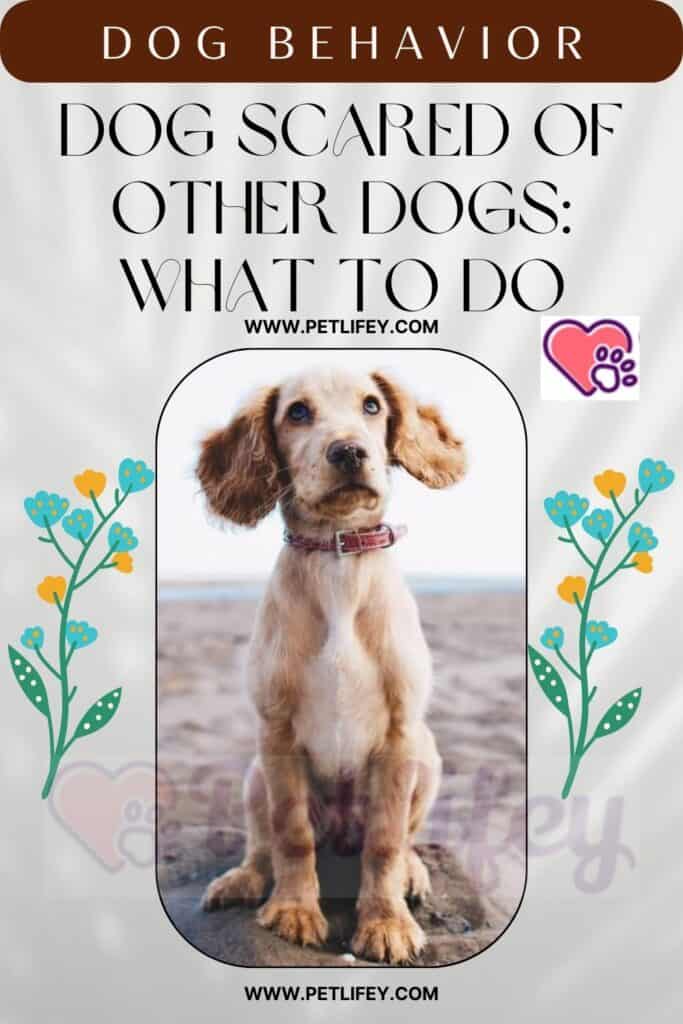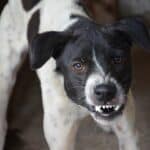
Walking around with a dog that is afraid of other dogs can lead to unpleasant situations. Follow these tips to learn how to manage this emotion appropriately.
Walking on the street, in the park or in the countryside can become a real nightmare for dogs who are afraid of other dogs. The reasons are different: a bad memory, a bad experience or the lack of socialization can cause this form of distrust in our pet.
The tension generated by the situation does not improve in contact with other dogs. In this article, we talk about dogs that are afraid of other dogs and how to behave.
Fear in dogs
Fear is an emotion caused by a stimulus, which can be a noise, a situation or, in this case, coming into contact with another dog. Obviously, for a social animal like a dog, it is not normal to feel fear and can be a problem during everyday activities like walking.
An owner cannot punish their pet just for feeling fearful, nor can they force them to interact with the other dog if they show clear signs of reluctance and fear. In these cases, it is advisable to seek the help of a trainer rather than trying to force the animal.
Signs of fear in dogs
Body signals are very important in identifying your pet’s mood. If you pay attention to these signs, it will be easy to prevent an embarrassing or dangerous situation.
The facial musculature that characterizes mammals allows humans to easily interpret the emotions of dogs.
Dogs express themselves through body language, with facial expressions, body posture and tail position, indicating their emotions.
A frightened dog:
- Has ears folded back or close to the head.
- Muscle tension. The animal may even begin to tremble.
- It tends to curl up the body.
- It has a low tail, sometimes between the legs.
- Start barking and panting.
- Try to get away from what scares them.
As the fear increases, the animal may defecate, urinate or even make repetitive (stereotyped) movements due to the stress generated by the situation. Some, on the other hand, react with excessive calm or sleep.
Why are dogs afraid of other dogs?
Dogs who are afraid of other dogs usually have a motivation. The most frequent causes are:
- Lack of socialization. The socialization phase is essential in the puppy’s life to avoid phobias during the adult phase. This period runs from the first three weeks of life up to three months. In this period it is essential to provide the puppy with as many stimuli as possible: only in this way will it learn to recognize another of their species, which are his friends, will it learn not to bite and to express itself through body language, among other things.
- Previous traumatic experience. A previous negative experience with another dog may be enough to make the animal fear another of its kind.
- Behavior strengthened by the master. Dogs easily recognize the emotions of their owners and if when you approach other dogs you are tense and afraid, you will transmit that feeling to your pet, for example by tightening the leash.
What to do in these situations?

Preventing your dog from being afraid of other dogs is no easy task – it will take time and effort. You cannot force them to interact with others, but you can gradually reduce the fear of meeting other dogs walking on the street by following a series of guidelines during walks:
- Lower the tension. It is advisable to use a long leash, about three meters long, to guarantee the animal quieter walks without tension or jolts of the leash when it crosses another dog. That way, it won’t associate the walk with feeling fear.
- Generate a habit. Keep some distance from other dogs that the animal feels comfortable with. The owner must show calm behavior and always use positive reinforcement in these situations. Over time, this distance may be reduced.
- Observe the animal carefully. It is very important to pay attention to the body language of the animal to study its limits and recognize its progress.
By training them in this way, the fear of other dogs will gradually disappear and little by little they can begin to interact with strangers.






